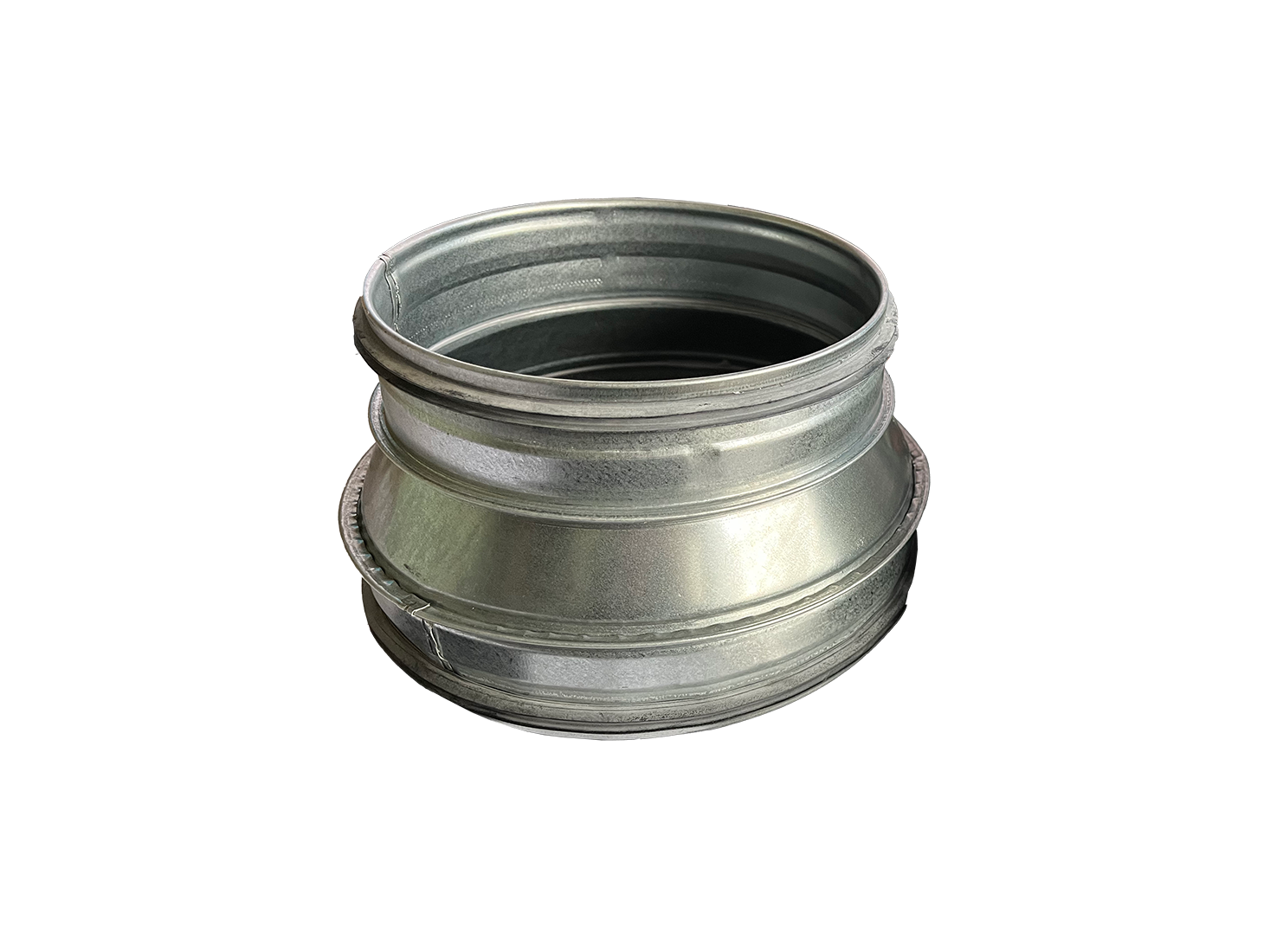Metal Reducers
Product Part Number
100-80mm Short Reducer - R10080M
125-100mm Short Reducer - R125100M
150-100mm Short Reducer - R150100M
150-125mm Short Reducer - R150125M
160-100mm Short Reducer - R160100M
160-125mm Short Reducer - R160125R
160-150mm Short Reducer - R160150M
180-125mm Short Reducer - R180125M
180-150mm Short Reducer - R180150M
180-160mm Short Reducer - R180160M
200-100mm Short Reducer - R200100M
200-125mm Short Reducer - R200125M
200-150mm Short Reducer - R200150M
200-160mm Short Reducer - R200160M
200-180mm Short Reducer - R200180M
250-150mm Short Reducer - R250150M
250-180mm Short Reducer - RC250180
250-200mm Short Reducer - R250200M
Description
Metal reducers are constructed of high quality durable galvanised metal
Manufactured without seals
Male spigots, these metal reducers will fit inside round metal ducting.
Made in the UK
Perfectly suited for ducting your ventilation system, kitchen extractor fan, bathroom fan or in-line extract fans
Can be used to connect long ductwork run for a variety of purposes including whole house ventilation, passive stack vent, positive input, air conditioning, HVAC, and heat recovery systems.
Compatibility
Compatible with most other lead manufacturers for galvanised metal ducting
Performance
Solid rigid ducting is suitable for use in all buildings to provide superior airflow performance vs. comparative size rectangular or flexible PVC or aluminium duct. Suitable to use in compliance with Part F Building Regulations.
Installation
To provide the best performance in airtightness and durability we recommend you provide greater mechanical strength to a joint by using a combination of plastic ducting sealant and aluminium duct sealing tape
- Apply duct sealant to the male fitting
- Push together
- Apply aluminium duct sealing tape over joint
Alternatively, you can use self-sealing fittings that speed up the time taken by up to 70% and can be easily dismantled
Insulation of Ductwork
It is important that any ducting located in a cold area (e.g. loft space) to be insulated. The insulation needs to be the equivalent of 25mm thick and have a thermal conductivity of 0.04W/(m.k) or less.
This ensures that condensation doesn’t form due to the difference in air temperature inside the duct when compared to the air temperature in the cold space.
If you don’t have a loft space there is still a need for insulated ducting on the intake and exhaust legs, as they will be carrying cold air in a warm space. The level of insulation can be achieved by wrapping duct in a layer of 25mm duct wrap that has a silver foil face on a 25mm rockwool
It is also worth noting that foil wrap with air bubbles (bubble wrap) is no longer applicable in building control regulations.

























